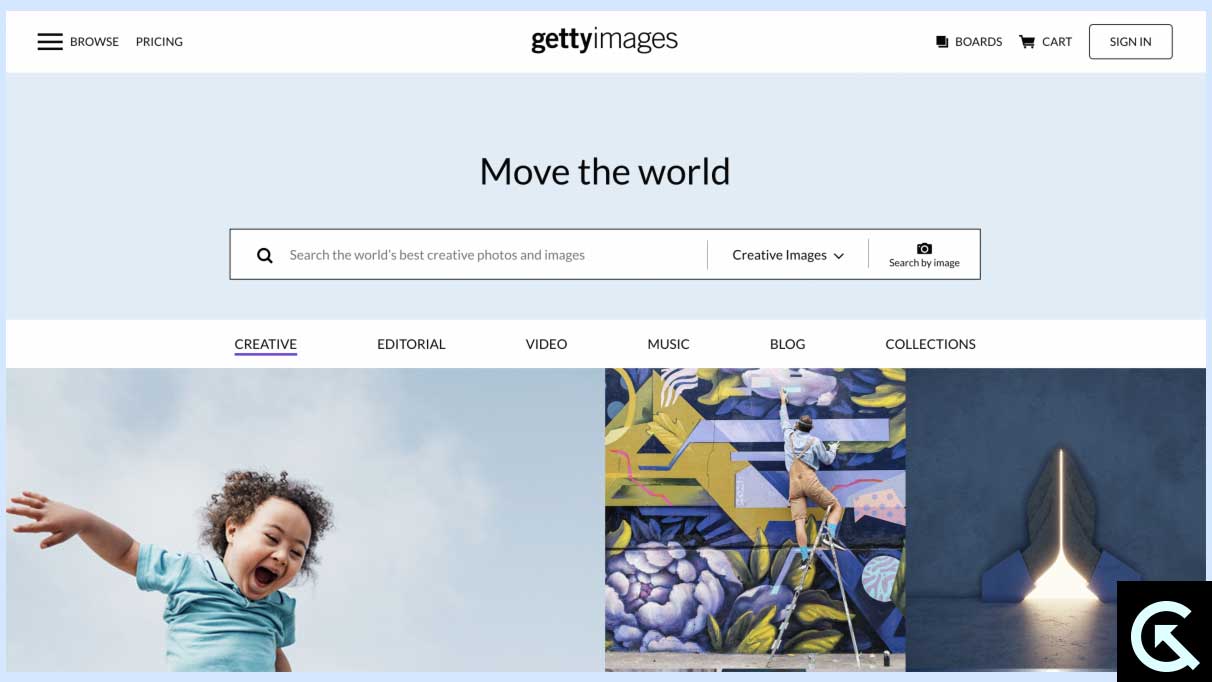Using images legally is crucial in today’s digital landscape. Getty Images is a well-known platform that offers a vast collection of photographs, illustrations, and videos, but understanding copyright laws is essential to avoid legal repercussions. This guide outlines the best practices for using Getty Images responsibly and legally while maximizing the value of the content you choose to use.
Understanding Copyright and Image Usage

Copyright is a legal framework that grants the creator of original works exclusive rights to their use and distribution, typically for a limited time. This means that if you want to use someone else’s images, you must obtain permission or pay for a license.
When using images, it’s vital to understand the different types of licenses such as:
- Royalty-Free: You pay once for the image and can use it multiple times without additional fees, although restrictions may apply.
- Rights-Managed: You pay based on specific use, such as geographic distribution or duration. Each use may incur additional fees.
- Creative Commons: Some images are available for free, but usage must adhere to specified conditions like attribution and non-commercial use.
Infringing on copyright can result in legal action, financial penalties, or being required to remove the content. Therefore, always ensure you have the correct licensing in place before using images from Getty or any other image service.
What is Getty Images and How Does It Work

Getty Images is a leading visual media company that provides high-quality stock photos, illustrations, and videos for various uses, including advertising, publishing, and editorial. The platform has millions of images, catering to different industries and creative needs.
Users can access Getty Images by:
- Creating an account on the Getty Images website.
- Searching for images using keywords or categories to find visuals that fit their projects.
- Selecting images and reviewing their licensing options, which dictate how the images can be used.
To use an image, users must either pay for a license or, in some cases, can use images with attribution under a Creative Commons license. Getty Images also partners with a wide range of photographers and artists, ensuring a diverse collection of high-quality content.
Common Copyright Mistakes to Avoid

When it comes to using images from Getty, many people inadvertently stumble into copyright issues. Here are some common mistakes to watch out for so you can steer clear of legal trouble:
- Assuming All Images are Free: Just because an image is accessible online doesn’t mean it’s free to use. Always check licensing terms!
- Neglecting to Read the License Agreement: Each image comes with its own licensing agreement, specifying how it can be used. Make sure to read it carefully!
- Using Images for Unapproved Purposes: If you license an image for a blog post, don’t use it on merchandise without an additional license.
- Ignoring Attribution Requirements: Some licenses require that you give proper credit when using an image. Omitting this can lead to potential disputes.
- Modifying Images Without Permission: Altering an image may violate copyright unless the license explicitly allows editing. Check first!
By being mindful of these common pitfalls, you can significantly reduce the risk of infringing on copyright and ensure that you’re using images legally and ethically. Remember, respecting creator rights not only protects you but also supports the artists behind the images!
How to Properly License Images from Getty
Licensing images from Getty is a straightforward process once you understand the steps involved. Here’s how to properly license images and ensure you’re on the right side of copyright:
- Visit the Getty Images Website: Go to Gettyimages.com and use the search bar to find images that fit your needs.
- Select Your Image: After you find an image you like, click on it to view details, including licensing options and pricing.
- Choose the Appropriate License: Getty offers various types of licenses, including standard and editorial. Make sure to select the one that corresponds with how you intend to use the image.
- Add to Cart and Checkout: Once you’ve selected the appropriate license, add the image to your cart and proceed to checkout. This will finalize your licensing agreement.
- Download the Image: After payment, you will receive a link to download the image. Ensure you save it securely along with the licensing information.
Always keep a record of your licenses, as you may need to refer to them later or provide proof of your rights if questioned. Using Getty Images correctly not only protects you legally but also supports the artists and photographers who create stunning content for all of us to enjoy!
Alternatives to Getty Images for Copyright-Free Photos
If you’re on the hunt for stunning visuals but want to avoid copyright issues, you’re in luck! There are numerous alternatives to Getty Images that offer copyright-free or public domain photos. Here are some top picks:
- Unsplash – This platform boasts a vast collection of high-resolution images contributed by photographers from around the world. All photos are free to use under the Unsplash license, which means you can use them for commercial and non-commercial purposes without asking for permission.
- Pexels – Pexels offers a wide array of free stock photos and videos, all released under the Pexels license, allowing for various uses without restrictions.
- Pixabay – Similar to Unsplash and Pexels, Pixabay hosts over a million free images and videos. Everything is released under creative commons, making it easy to find what you need without worrying about attribution.
- Flickr’s Creative Commons section – While not all images on Flickr are free, you can find a treasure trove of copyright-free images in the Creative Commons section. Just be sure to check the specific license for each image.
- StockSnap.io – This site provides an extensive selection of free stock photos, with new images added weekly. All images are under the Creative Commons license for easy use.
These platforms not only save you from potential legal headaches but also provide a wealth of professional-quality images for your projects. Plus, many photographers share their work for the joy of it, so you’re supporting their creative efforts by using these sites!
Best Practices for Crediting Images
Crediting images correctly is a crucial part of using any visual content, even if the images are copyright-free. Proper attribution respects the original creator’s work and maintains transparency in your projects. Here are some best practices to follow:
- Check the License: Always read the license associated with the image. Creative Commons licenses can vary in their requirements for attribution.
- Include the Creator’s Name: When crediting an image, include the photographer’s name. For example, “Photo by John Doe on Unsplash.”
- Link Back to the Source: If possible, link back to the page where you found the image. This not only provides credit but also supports the creator’s work.
- Use the Correct Format: Some licenses specify how credit should be formatted. Follow the guidelines to ensure compliance.
- Consider Placement: Place your credits near the image or at the end of your content. This makes it easy for viewers to understand who created the work.
By following these best practices, you can use images ethically and responsibly, showing respect for artists while enhancing your own content. Remember, acknowledging the hard work of photographers enriches the creative community!
Case Studies of Copyright Violations
Understanding the implications of copyright violations is crucial, especially in a world where visual content is so easily shared online. To illustrate the stakes involved, let’s look at a few notable case studies of copyright violations involving images, specifically related to Getty Images.
Case Study 1: Photographer vs. Blogger
A well-known travel blogger posted a stunning photograph they found on the internet, originally licensed by Getty Images. Despite their intention to credit the photographer, the blog was flagged, and the photographer took legal action. The outcome was a substantial settlement cost, demonstrating the risks of using high-quality images without appropriate licensing.
Case Study 2: Small Business Missteps
A small business owner used an image from Getty in promotional materials for their storefront without obtaining the necessary license. When Getty Images discovered the misuse, they issued a demand for payment. The owner faced significant fines that threatened their business, emphasizing how a lack of awareness can lead to severe financial repercussions.
Case Study 3: Influencer Impact
In another instance, a popular social media influencer posted a Getty image to their profile, expecting to gain likes and followers. Instead, they received a cease-and-desist letter, along with a demand for compensation. This situation highlighted the importance of understanding copyright law, especially in an age where influencers often promote themselves using third-party content.
These case studies serve as stark reminders of the importance of respecting copyright laws. Before using any image, it’s vital to ensure you’re adhering to licensing agreements to avoid the consequences of copyright infringement.
Staying Updated with Copyright Laws and Regulations
The landscape of copyright laws is continuously evolving, influenced by technological advancements and changes in how content is shared and consumed. Staying informed about these changes is essential, especially for content creators who regularly utilize images, such as those from Getty Images.
Here’s how you can stay updated:
- Follow Legal Blogs and Websites: Websites like the Copyright Office or industry-specific legal blogs provide valuable insights into the latest copyright regulations.
- Subscribe to Newsletters: Many organizations offer newsletters focusing on intellectual property, giving you direct access to the latest developments.
- Attend Webinars and Workshops: Participating in online webinars hosted by legal experts can deepen your understanding and offer practical tips for navigating copyright law.
- Join Professional Organizations: Being part of professional communities related to your field can keep you in the loop about relevant changes in copyright laws.
Moreover, it’s essential to not only familiarize yourself with current copyright laws but also be aware of any pending legislation that might affect how images can be used. Understanding these regulations will help you make informed decisions and ensure that your use of copyrighted materials remains compliant and respectful.
Best Practices for Using Getty Images Without Violating Copyright
Getty Images is a premium source for stock photography, but using its images without appropriate permissions can lead to copyright infringement. To avoid legal repercussions and ensure ethical use, consider the following best practices:
- Understand Licensing Types: Getty Images offers various licensing options, including:
- Royalty-Free: Pay a one-time fee, and use the image multiple times without additional costs.
- Rights-Managed: Pay based on the usage, time, and geographic restrictions; costs can vary significantly.
- Always Read the License Agreement: Each image comes with a license that outlines permitted uses. Familiarize yourself with these terms.
- Give Proper Attribution: If required by the license or to uphold ethical standards, always credit the photographer and Getty Images.
- Use the Search Filters: Utilize Getty’s filters to find content that fits your licensing needs easily.
- Consider Free Alternatives: If you’re working with a tight budget, explore free stock photo websites that offer images under Creative Commons licenses.
| Licensing Type | Cost Structure | Usage Rights |
|---|---|---|
| Royalty-Free | One-time fee | Multiple uses allowed |
| Rights-Managed | Varies by usage | Specific use restrictions |
By following these best practices, you can confidently use Getty Images while respecting copyright laws and supporting creators. Always stay informed about the latest updates in copyright policies to ensure compliant use.


